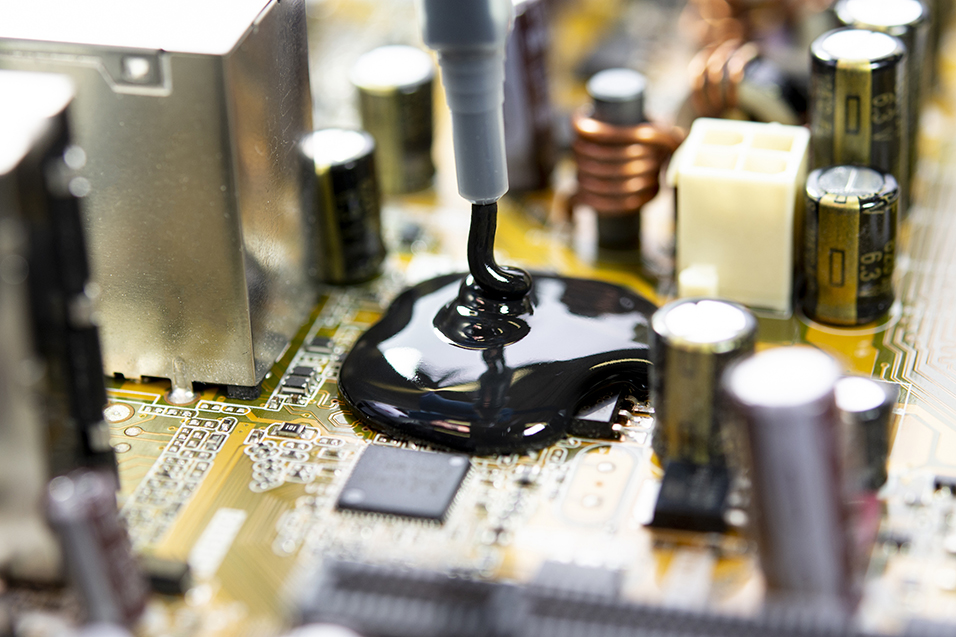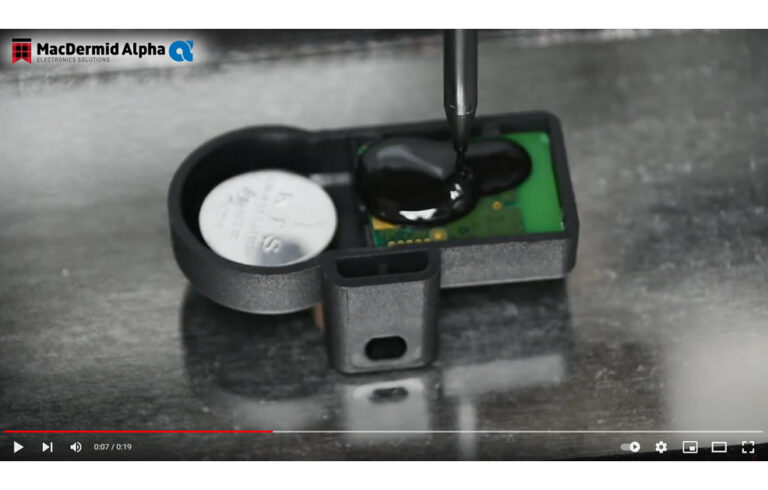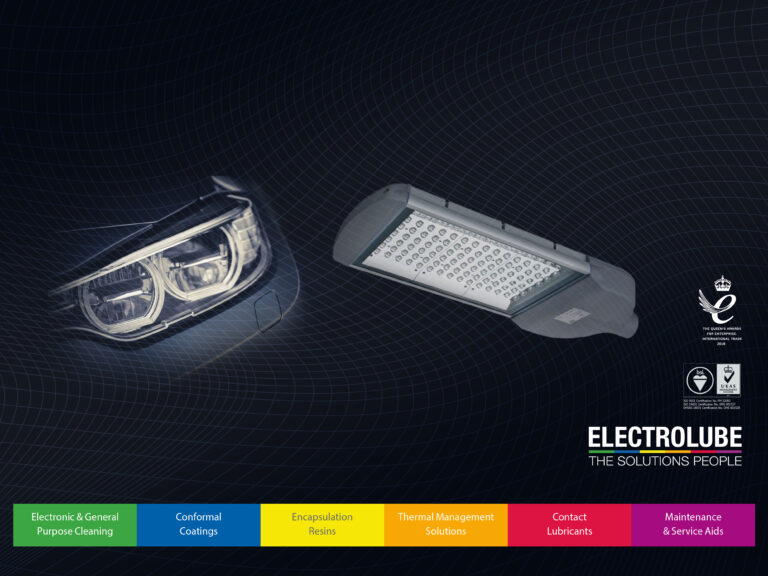So far, in my blogs on resin chemistries and encapsulation/potting techniques, I have tended to concentrate on the properties of these materials; how they are best applied in the factory and the steps that must be taken to get the best performance from them once they are out there in the field, protecting an electronic assembly or lighting fixture against the elements. In this months blog, I am going to address the question of resin failures – in particular, how to avoid them – and to get a better idea of where and how modern resins – appropriately selected and applied – are making a big difference to what we might call the world of ‘extreme’ electronics installation and implementation.
With regard to resin failures and how to avoid them, there are some excellent, well formulated resins out there that will deliver unfailing service as long as they are carefully selected for the anticipated conditions, stored appropriately and applied and cured according to the manufacturer’s recommendations. One lapse in this sequence and you are likely to have a problem on your hands – a problem that may manifest itself on the test bench if you are lucky, or, if you are very unlucky, it will manifest sometime later when a unit is already in service and likely to be operating in some hazardous or otherwise difficult-to-access location.
There are a number of simple steps that can be followed to reduce incidences of resin failure and, at best, to help you avoid them altogether. Firstly, always read the product manufacturer’s technical data sheet; this will at least guide you on basic requirements such as ensuring that the correct storage conditions for the product are being maintained. Operate good stock rotation so that the resin is not left in storage for a prolonged length of time and always make sure that containers are kept well sealed.
Secondly, it is vital to ensure that the correct mix ratio for two-component resins is achieved. For medium to large production volumes, the use of a mixing machine is recommended to minimise the risk of variability in the mix ratio across a production run. It is important to ensure that all pipework used with these machines is bled properly to ensure that there isn’t any air present in the system which could result in mix ratio variations, or air entrapment in the resin.
It is always wise to carry out regular checks on the amount of each component being dispensed if a machine is used. And if manual mixing is preferred, say for short runs and/or prototyping, it is advisable to use calibrated balances to measure each component and only pour the amount of resin required for the job in hand – and be sure to reseal containers without delay.
Cleanliness is vital to achieving satisfactory potting or encapsulation. Metal enclosures, for example, must be thoroughly cleaned before resin application to remove any corrosion, dirt, grease or metal working fluids that might be present as these will reduce the resin’s ability to adhere to the metal surface. Similar precautions need to be taken with plastic moulded housings to remove any residual mould release agents. Make sure that the printed circuit board itself is clean as any dust or other contamination on the surface will get trapped and the resin will adhere to the contamination rather than to the surface of the board or components, resulting in a weak spot and a potential point of failure.
The useable life, gel and curing times of a resin are all based on it being cured at room temperature. It is possible to reduce these times by the application of heat, but it is best to do this after the material has gelled to ensure a consistent cure. The amount and type of resin in a unit will determine the potential exotherm, which is the rise in temperature of the resin resulting from the chemical reaction between its two components on mixing. The larger the volume of resin used, the larger the exotherm. Where larger volumes need to be encapsulated, it is best policy to conduct this in two or more stages to minimise any potentially damaging exotherm. Check the technical data sheet for any curing recommendations for elevated temperatures, but remember that every oven/curing chamber is different, so the same resin in the same volume may require a different curing profile in two different ovens.
Environmental considerations
Resins can protect an electronic assembly against a wide variety of environmental influences, whether they are due to climatic conditions or potential attack from any chemicals to which the assembly may be exposed. One of the biggest concerns is to keep water out of the assembly, be it from light moisture due to high ambient humidity or full immersion in saltwater.
Electronic assemblies are now being deployed and operated in environments that would not have been contemplated only a decade or so ago, and each year more extreme environments are being specified by designers. For example, there are resins that are suitable for use in aquatic environments, be it in fresh or saltwater, from a light splash to full immersion. Resins can now be found protecting a variety of submerged applications, from swimming pool lights to sensors used for monitoring pollution in rivers, to telecommunication cable joints deep beneath the ocean surface.
Resin formulations are also likely to be influenced by geographical location. Polyurethane resins, for example, are particularly sensitive to moisture, and so have to be modified for areas which have high humidity and/or rainfall. Conversely, silicone resins will require a certain amount of humidity to enable the resin to cure. High ambient temperatures can reduce the shelf life of certain resins; and where the resin has a high percentage of fillers these conditions can also cause filler sedimentation.
Low temperatures, too, bring their own set of problems. When the temperature drops below 10°C for a long period, certain resins and hardeners begin to crystallise and the crystals drop out of solution. Many materials can be heated in order that the crystals are dissolved back into solution, but some cannot be treated in this way so, again, it is important to consult the material’s technical data sheet to ascertain the resin’s optimum storage conditions.
Always consider what rules and regulations are valid in various regions of the world and the preferences of the various industries that are to be served in these regions. The choice of resin chemistry is very likely to vary, whether for health & safety or other environmental regulatory requirement; in some areas epoxies will be preferred over polyurethanes, while in others silicone resins would simply be a non-starter.
Resins play an integral part in ensuring that an electronics product can survive for at least its design life, and often well beyond. Be it chemical, environmental, physical or thermal, whatever the conditions, there is a resin system that can be found or developed to provide the protection required.











